Google’s New Definition of “Exact Match”: What It Means to You
by Aden Andrus • March 27, 2017
As of today, Google AdWords has begun redefining which searches will trigger ads using an Exact Match keyword.
To date, your ads would appear when someone searches for your exact keyword, without any additional words before, after, or in the middle. For example, if your keyword was [buy new flooring], your ad would only show if someone entered “buy new flooring”, not “new flooring buy” or “i want to buy new flooring.”
However, Google would show your ad if someone searched for close variants of your keyword (singular and plural forms, misspellings, stemmings, accents, acronyms, or abbreviations).
So, if your keyword was [buy new flooring] your ad might not show up for “new flooring buy”, but it could show up for “buy new floor”, “by new flooring” or even “buy new flr.”
Today, Google is expanding its definition of “exact match” to include even more close variants. Here’s what’s changing:
Function Words
Function words are those little words we use all the time in English to connect ideas without actually changing the meaning of those ideas:
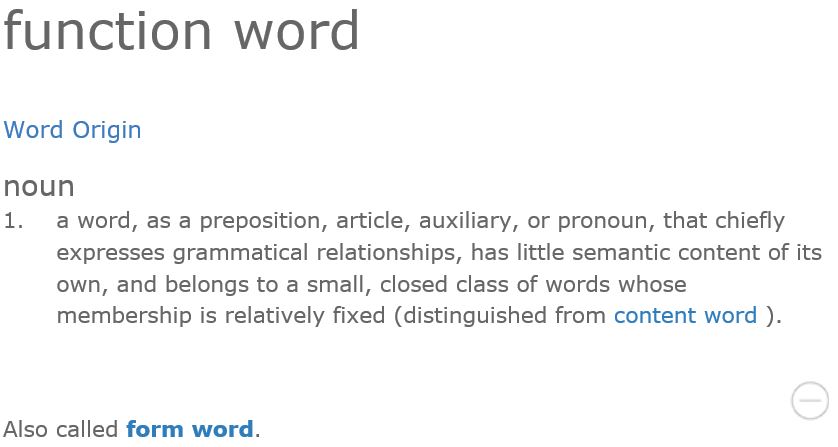
Now, only about 0.1% of words are function words, but prepositions like “in” or “to”, conjunctions like “for” or “but”, or articles like “a” or “the” account for about 60% of the words we use.
However, while we use function words all of the time, “to buy new flooring” doesn’t really imply any different intent than “buy new flooring.”
Until now, though, if someone typed in “to buy new flooring” and you were bidding on [buy new flooring], your ad wouldn’t show. It had extra words that weren’t part of your exact match keyword, so even though the intent was an exact match, the search would not be defined as an exact match.
With the new update, all of that will change.
Google’s expanded definition of “exact match” now ignores function words. So, if someone types in “to buy new flooring”, your ad will show up.
This is nice, but it does create with some potential problems. The “to” in “to buy new flooring” doesn’t imply a different intent than “buy new flooring”, but what about the “to” in “train to DC”? Someone who types in “train to DC” is looking for something very different than someone who types in “train from DC”.
Fortunately, Google has anticipated this problem. If a function word does change the meaning of a keyword, Google won’t ignore it.
Here’s how Google sums up when searches with function words will match an exact match keyword:
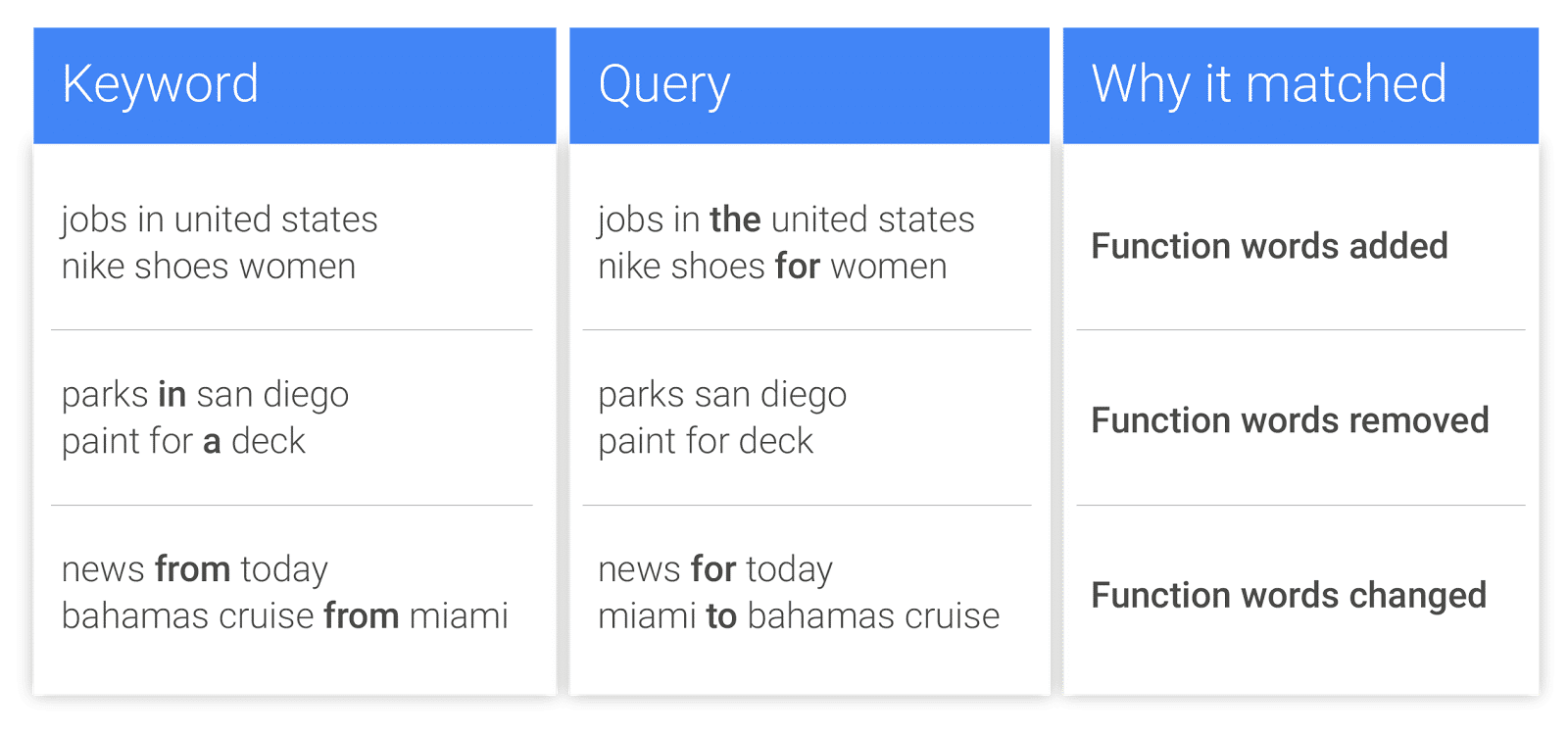 Essentially, instead of penalizing you for not anticipating every possible variant in your exact match keyword list, Google will now show your ad for searches that only vary from your exact match keyword because a searcher used a function word that does not change the meaning of their search.
Essentially, instead of penalizing you for not anticipating every possible variant in your exact match keyword list, Google will now show your ad for searches that only vary from your exact match keyword because a searcher used a function word that does not change the meaning of their search.
Not too shabby, eh?
Reordered Words
Differences in word order don’t necessarily mean a difference in intent. Different people say things in different ways. Or, people often start a search assuming that a particular query will get them what they want, only to realize that they need to be more specific.
For example, if I’m interested in buying embossing foil for an upcoming project, I might search for “foil” and assume that Google will show me foil for sale. However, here are the results I get:
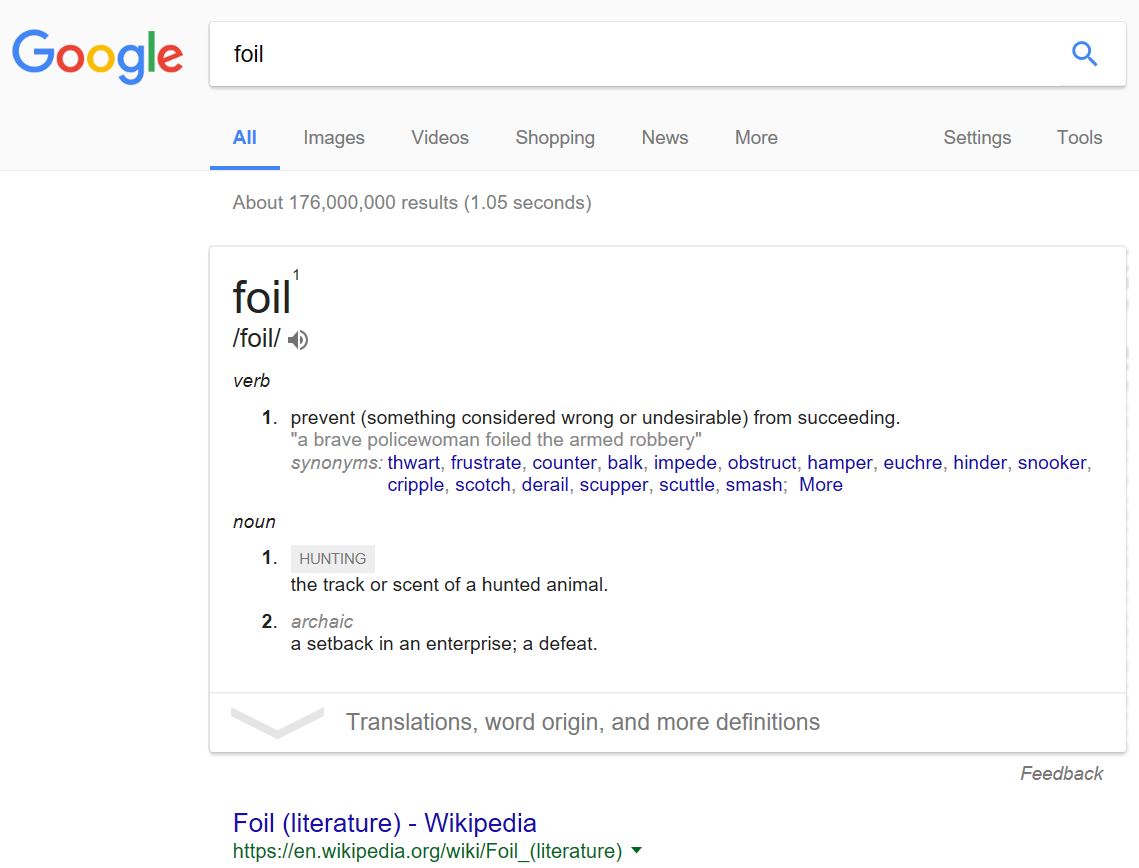
Nope, not interested in the “track or scent of a hunted animal.” Since I’m human, once I realize my folly, I’ll probably take the path of resistance and add the word “buy” to my query to get “foil buy”. No, it’s not good English, but it’s a Google search, but who really cares?
Here’s what I get:
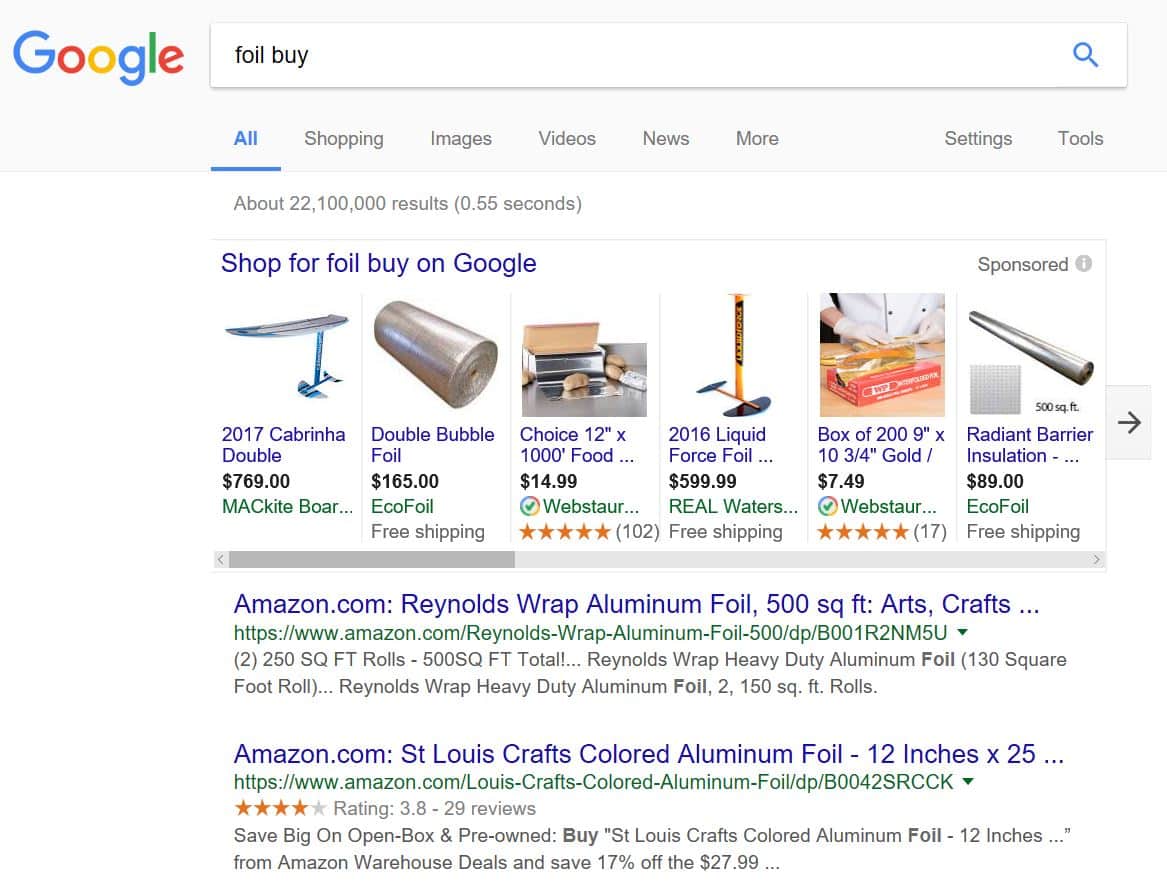
Much more relevant, right? However, it’s still not what I’m looking for. The product listing ads are getting in the vicinity of what I’m after, but I’m still not seeing any embossing foil.
So, I again have a human moment and add “embossing” to the end of my search to get “foil buy embossing”. No human would know what I’m talking about, but Google does a pretty good job of matching my query:
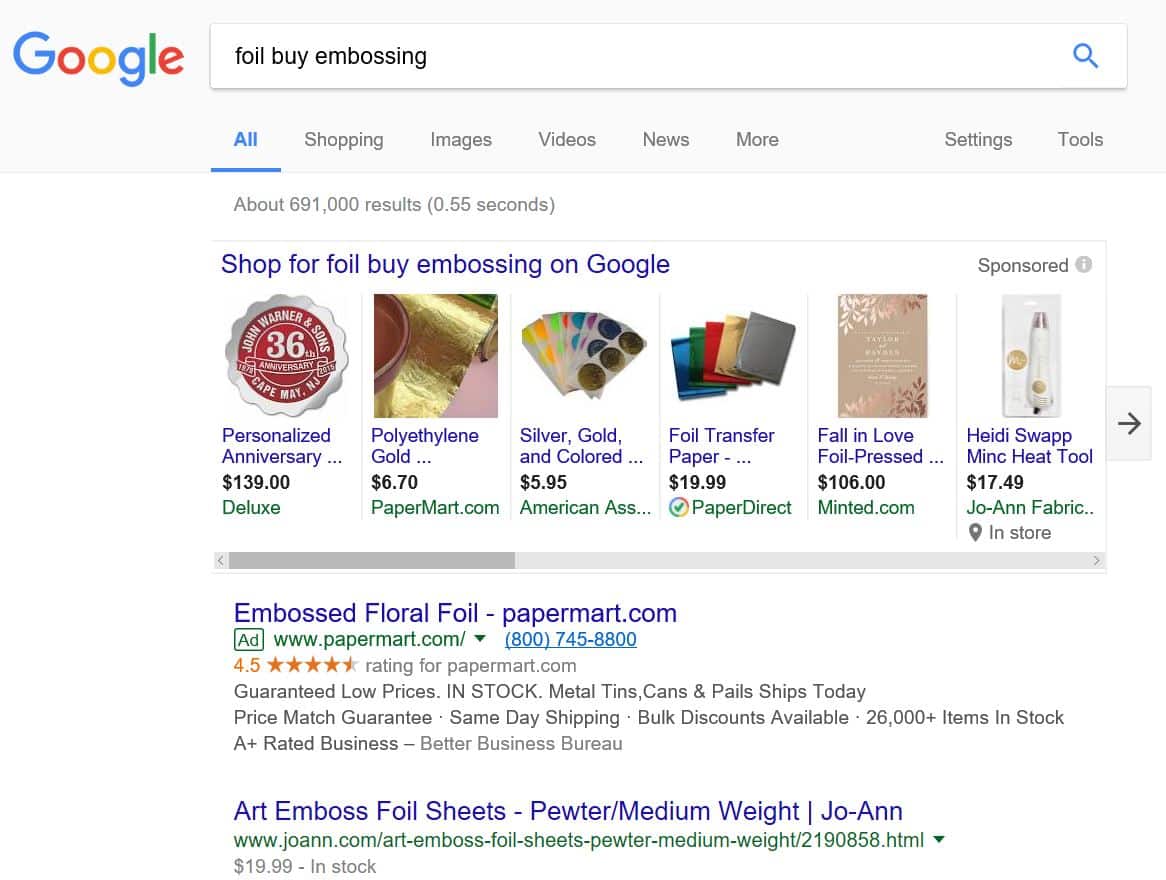
Now that’s what I’m talking about! However, who is really going to bid on [foil buy embossed] as an exact match keyword? It’s a highly relevant search, but a largely unpredictable query.
And don’t judge me, you know you do it too.
While this is a problem that can potentially be solved by using broad match keywords, broad match comes with its own set of problems. Fortunately, with this new update, you no longer have to decide between creating every possible exact match iteration of a highly relevant set of keywords or missing out on your random “foil buy embossing” search.
With Google’s new definition of “exact match,” AdWords will now show your ads even if the word order in a given query is slightly different from the word order of your keyword.
So, if you’re bidding on [buy new flooring] and someone types in “new flooring buy”, your ad will still be displayed. That takes a lot of the potential headache out of creating your keyword lists.
There are a couple of caveats, though. Google won’t add words to your keywords (with the exception of function words, which we already discussed). In other words, if someone types in “brand new flooring buy” your ad won’t show.
Also, if reordering your keywords to match a keyword would change the meaning of your keywords, AdWords won’t show your ad. For example, [train from Philadelphia to DC] means something very different from “train from DC to Philadelphia”, so if you’re bidding on the former and someone types in the latter, your ad won’t show.
In theory, this change should allow you to gain all of the benefits of exact match keywords without having to worry about how people type in—or in the case of voice search, say—your keywords.
What to Expect
Obviously, this isn’t the most groundbreaking AdWords change in history, but you can expect this new definition of “exact match” to have a relatively mild effect on your account.
For those of you who have already created exhaustive reworded and reordered lists of keywords, AdWords will preferentially use those keywords, so your traffic probably will not change greatly as a result of this update.
However, if your exact match keywords are a little less robust, Google reports that “Early tests show advertisers may see up to 3% more exact match clicks on average while maintaining comparable clickthrough and conversion rates.”
For most accounts, I’d wager that that 3% is being stolen from other less-specific keywords like broad or phrase match, which begs the question, “What’s the point?”
Well, assuming that you don’t change your keyword strategy, shifting a few clicks from phrase or broad match keywords to exact match keywords probably won’t do much for your account.
But, that doesn’t mean this update doesn’t present an interesting opportunity.
Taking Advantage of this Update
The primary draw of exact match has always been ad specificity. After all, if you know exactly what search query triggered your ad, you can create very specific ad copy to match the intent of that search.
Pair highly specific messaging with a targeted landing page and you have a good chance of turning that search query into a conversion.
The downside to exact match, however, has been the fact that people aren’t completely predictable. As we’ve already shown in this article, there are a lot of ways to say “I want to buy new flooring”. If you’re only bidding on the exact match keyword [buy new flooring], you’re missing out on a lot of potential impressions, clicks and conversions.
On the flip side, though, phrase and broad match allow you to reach a broader audience, but you have a lot less control over what searches your ads show up for…which means less specific ad copy and landing pages…which potentially means less conversions.
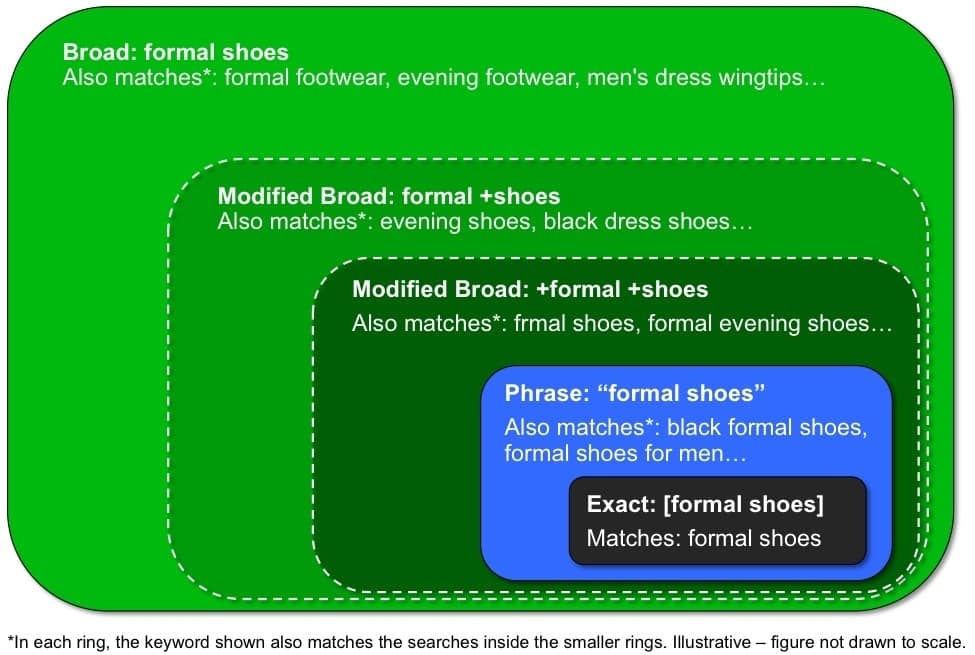
That leaves you stuck in the middle. You want the specificity of exact match so that you can craft truly compelling ad copy, but you need the flexibility of phrase or broad match to maximize your reach.
The good news is, Google’s new “exact match” rules actually go a long ways towards bridging this gap.
When you get right down to it, exact match isn’t about targeting a specific keyword or search phrase. The point of exact match is to target specific search intent…as indicated by a specific keyword or search phrase. That specific keyword or phrase may vary somewhat, but the intent stays the same.
Historically, that made for a complicated situation. But, with the recent update, Google is accounting for much of that variability, which allows you to use “exact intent” targeting, rather than “exact match keyword” targeting.
Instead of building campaigns and ad groups around keywords, this new development allows you to build campaigns around intent. Take our [buy new flooring] keyword, for example.
Someone who searches “buy new flooring” is clearly looking to do something very specific: buy new flooring. However, that same intent could be articulated in a number of different ways:
- [upgrade old flooring]
- [replace old flooring]
- [remodel old flooring]
- [purchase new flooring]
- [new flooring sale]
- [buy new flooring]
- [change my flooring]
- And the list goes on…
While all of these keywords are different, they all address the same basic need and intent: I have old flooring and I need new flooring. That need is clearly addressed in the following ad:
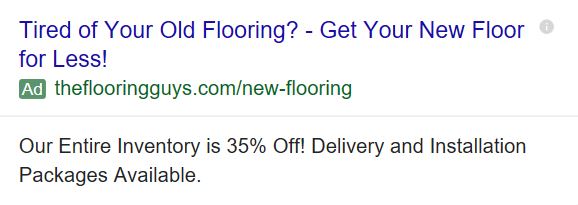
Under the new “exact match” definition, including all of these keywords in a single ad group would mean that this ad would show for all of the following searches:
- “upgrade old floor”
- “old flooring replace”
- “new flooring for sale”
- “buy new floor”
- And so on…
Would this ad be a great fit for all of these searches? Absolutely!
The keywords or synonyms of those keywords are all present, making the ad eye-catching and clearly highly relevant. Point those ad clicks to a landing page focused on replacing old flooring with new flooring and you should have a pretty good conversion rate.
Now, at first you might think, Why not just use this same ad for phrase or broad match?
Honestly, you could take this approach. Instead of bidding on a bunch of exact match keywords, you could simply bid on [buy new flooring], “buy new flooring” and +buy +new +flooring.
The only problem is, then your ad could show up for searches like:
- “what cleaning product should i buy for my new flooring?”
- “basement flooded and i don’t want to buy new flooring what do i do?”
- “how to get stains out of new flooring”
- And so forth…
Now, before you think, There’s no way that people search that often enough for it to matter, we’ve seen AdWords accounts that have wasted thousands of dollars on irrelevant search queries like this.
As I said earlier, phrase and broad match keywords can increase the reach of your ads, but they also increase the risk of wasting money on the wrong search queries.
However, by using Google’s new “exact match” definitions to create ad groups focused on keywords with a similar intent, writing ad copy that addresses that intent and building landing pages that match that intent, you simultaneously maximize clicks, conversions and impressions.
Best of all, you should be able to get a whole lot more out of this new update than a measly 3% increase in exact match clicks.
Conclusion
At a glance, this new update seems fairly straightforward. AdWords will now ignore function words and word reordering in search queries for exact match keywords.
However, this change allows advertisers to target intent much more effectively. Essentially, by using exact match to target multiple keywords with the same intent, you can create ads that are specific to the intent behind a search—even if that search uses a variety of different keywords.
As a result, your ads will be able to reach a larger audience while still retaining all of the advantages of being hyper-relevant to the search intent of your potential customers.
What do you think of this new update? Any thoughts on this approach? Have you tried anything similar? What sorts of results have you had with this new definition of “exact match”?





